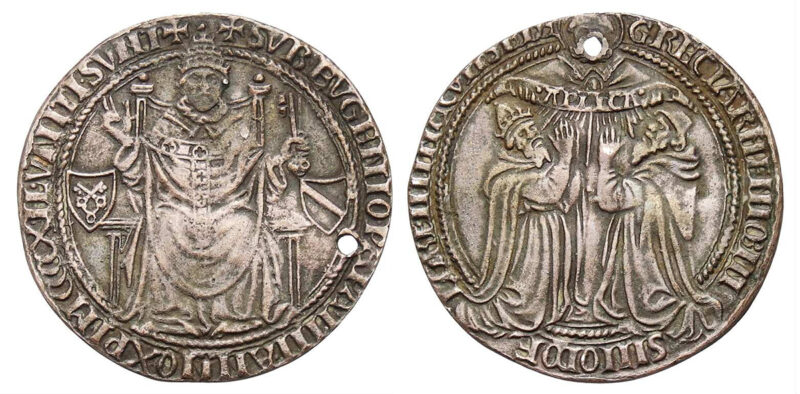
Introduction: A Window to History Through Numismatics
Numismatics offers a unique lens into history, presenting tangible relics that echo the events and cultures of bygone eras. Among these artifacts are the earliest known original papal medals, issued under Pope Eugene IV in the mid-15th century. These medals, intricately linked to the Council of Florence, represent a significant moment in the history of the Roman Catholic, Greek Orthodox, and Armenian Churches.

Historical Context: The Council of Florence
The 15th-century papacy of Eugene IV was notable for its ambitious attempts to reunify the Western and Eastern Churches, divided since 1054. The Council of Florence, convened between 1438 and 1439, embodied these efforts, bringing together representatives from the Roman Catholic, Greek Orthodox, and Armenian Churches to foster dialogue and seek unity.
The Medals: Symbolism and Significance
The two medals, one in gold and the other in silver, feature a portrait of Pope Eugene IV. The Latin inscriptions on these medals, “SVB EVGENIO PAPA IIII ANNO XPI M CCCCXLI VNITI SVNT” on the gold and a similar version for the year 1442 on the silver, translate to “under Pope Eugene IV, they are united.” This phrase poignantly encapsulates the fleeting unity achieved during the Council.
Reverse Imagery: A Symbol of Aspired Unity
The reverse of the medals presents a powerful image: Saint Peter, symbolizing the sacred teachings of the Church, is depicted alongside two kneeling prelates, possibly representing figures from the Armenian and Greek Orthodox churches. This design highlights the aspirations for harmony and unity pursued during the Council.
The Armenian Perspective
Particularly intriguing for Armenian numismatics is the acknowledgment of the Armenian Church’s involvement in these negotiations. The representation of unity among the Roman Catholic, Greek Orthodox, and Armenian Churches underlines the historical significance of the Council of Florence from an Armenian standpoint.
Legacy and Housing
Today, these medals reside in the Medal Cabinet of the National Library in Paris, France. More than mere artifacts, they represent the complex interplay of religious politics, international diplomacy, and cultural dialogue, with the Armenian Church playing a pivotal role in this historical narrative.

Conclusion: A Rich Tapestry of Interconnected Histories
These papal medals from Pope Eugene IV’s era are not just numismatic treasures; they are a testament to the rich, multifaceted story of the Armenian Church’s role in Christian history. They offer a glimpse into a time when unity seemed within reach, serving as a reminder of the shared heritage and aspirations of Eastern and Western Christian traditions. As such, they provide a fascinating and valuable field of study for those interested in Armenian history, European ecclesiastical developments, and the captivating world of numismatics.
